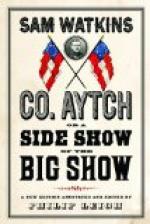The true Celt is still a pagan—Christianity has been superimposed. It is little more than veneer, and in the crises of life the Celt turns to the ancient belief of his race. But did Ulick really believe in Angus and Lir and the Great Mother Dana? Perhaps he merely believed that as a man of genius it was his business to enroll himself in the original instincts and traditions of his race.
They were as unquiet as cattle before an approaching storm, and when they returned to the drawing-room it seemed to him like a scene in a theatre about to be withdrawn to make way for another part of the story. Even while looking at it, it seemed to have receded a little.
At last it was time for Ulick to go. As they said good-night he asked her if he should come to lunch. She looked at him, uncertain if she ought to take him to the concert at all.
CHAPTER TWENTY-SEVEN
Monsignor, who was waiting for her at the steps of the hall which had been hired for the concert, introduced her to Father Daly, the convent chaplain. She shook hands with him, and caught sight of him as she did so. It was but a passing glance of a small, blonde man with white eyelashes, seemingly too shy to raise his eyes; and she was too stringently occupied with other thoughts to notice him further.
Owing to her exertions and Monsignor Mostyn’s, a large audience had been collected, and though the month was September, there were many fashionable, influential and musical people present.
The idea of the band, which Evelyn had thought of bringing down in the intention of giving the Forest Murmurs and the Bird Music, had been abandoned, but the finest exponent of Wagner on the piano had come to play the usual things: the closing scene of the “Walkuere,” the overture of the “Meistersinger” and the Prelude of “Tristan.” And, mingled with the students and apostles from London, were a goodly number of young men and women from the various villas. Every degree of Wagner culture was present, from the ten-antlered stag who had seen “Parsifal” given under the eye of the master to the skipping fawns eagerly browsing upon the motives. “That is the motive of the Ride; that, dear, is the motive of the Fire; that is the motive of Slumber in the Fire, and that is the motive of Siegfried, the pure hero who will be born to save Valhalla.” The class above had some knowledge of the orchestration. “You see,” said a young man, pointing to the score, “here he is writing for the entire orchestra.” “Three bars farther on he is writing for three violins and a flute. He withdraws his instruments in a couple of bars; it would take anyone else five-and-twenty.” At a little distance the old stag who had never missed a festival at Bayreuth was telling the young lady at his side that the “Walkuere” is written in the same style as the “Rheingold” and the first two acts of “Siegfried.” Another distinct change of style came with the third




